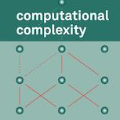Fast channel estimation in millimeter-wave (mmWave) systems is a fundamental enabler of high-gain beamforming, which boosts coverage and capacity. The channel estimation stage typically involves an initial beam training process where a subset of the possible beam directions at the transmitter and receiver is scanned along a predefined codebook. Unfortunately, the high number of transmit and receive antennas deployed in mmWave systems increase the complexity of the beam selection and channel estimation tasks. In this work, we tackle the channel estimation problem in analog systems from a different perspective than used by previous works. In particular, we propose to move the channel estimation problem from the angular domain into the transformed spatial domain, in which estimating the angles of arrivals and departures corresponds to estimating the angular frequencies of paths constituting the mmWave channel. The proposed approach, referred to as transformed spatial domain channel estimation (TSDCE) algorithm, exhibits robustness to additive white Gaussian noise by combining low-rank approximations and sample autocorrelation functions for each path in the transformed spatial domain. Numerical results evaluate the mean square error of the channel estimation and the direction of arrival estimation capability. TSDCE significantly reduces the first, while exhibiting a remarkably low computational complexity compared with well-known benchmarking schemes.
翻译:毫米波(mmWave)系统中的快速信道估计是高增益波波成形(mmWave)系统的基本推进器,能够提高覆盖范围和容量。频道估计阶段通常涉及初始波束培训过程,根据预先定义的代码簿扫描发射机和接收机上可能的波束方向的一个子集。不幸的是,在毫米波浪系统中部署的大量传输和接收天线增加了波束选择和频道估计任务的复杂性。在这项工作中,我们从不同于以往工作的不同角度处理模拟系统中的频道估计问题。特别是,我们提议将频道估计问题从角域移到已转变的空间域,其中对到达和离开角度的估计相当于对构成毫米瓦夫通道的角频率的估计。拟议方法称为变形空间域频道估计(TSDCE)算法,通过将变形空间域中每个路径的低度近似和抽样自动反应功能结合起来,显示出添加白高斯噪音的稳健性。我们提议的结果是评价频道估计的中度差差差差差差错和偏离点偏差,同时将精确的测测算能力大幅降低基率。




